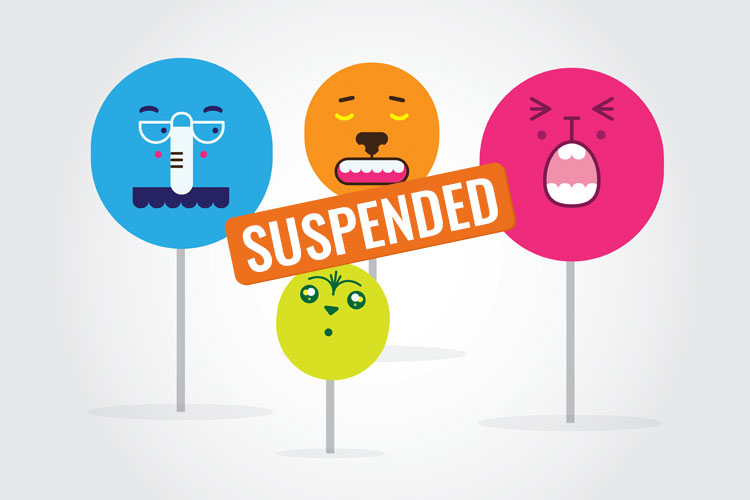Reasons that Cause Amazon Seller Suspension

Being an online seller is a tricky business these days. You need to make sure that the platform you use is the right one for your brand. Regardless of whichever name you associate yourself with, it can’t be denied that being linked with Amazon is one of the best things that can happen to a seller. Not only is it the most loved and recognized online selling platforms worldwide, it also gives you access to customers from every corner of the globe, making your status as a seller more lucrative than ever.
How to Avoid Being Suspended as an Amazon Seller
Amazon has a fair set of rules it employs to make sure that all the businesses as well as consumers are treated fairly. One of the most upsetting things that can happen in such an ideal scenario is having your Amazon account suspended. Being banished from the most fertile ecommerce market and seeing your entire product range being taken down is hard to digest. One can, of course, make an appeal to have their account back, but not only do they away weeks and months of profits, they’re also mostly denied. However, if you’re an honest, smart, and law-abiding Amazon seller, there are some things you can do to make sure you never do anything that Amazon considers frown-worthy enough to suspend your account.
Here’s a list of some of the deadliest sins to avoid to stay in the good books of Amazon, and also some ways to make them right:
Negative Customer Reviews
Keeping your customers happy is the primary duty as a seller. If you fail to stick to it, it can lead to negative reviews, and that serves as the easiest way to get kicked off from Amazon. At times it’s neither the brand policy nor the product quality that’s the issue, and hence, there are several adjustments you can make to keep the negative reviews at bay and get your top ranks back.
Running out of stock and having to cancel orders is the quickest route to getting a bad review from a customer. Use our real-time inventory sync tool, and inventory management tool and software so as to avoid overselling, and allow your stock levels to sync across all your channels. Also, do not add ambiguous product descriptions, for that can mislead your customers. This disappointment translates into bad reviews. Be direct and honest about your products, so that your customers know what to expect, thereby eliminating the room for disappointment.
Do little things to make your customers happy. For example, leave a little thank-you note along with their purchase. This will show them that you’re grateful for their loyalty. This can also be done through email campaigns to gain feedback. Lastly, you can offer a free gift every now and then in exchange for an honest product review.
Neglecting the Price Parity Issue
What is price parity, you might ask? When you decide to sell on Amazon, you agree that the prices of your products on Amazon will be lower than what they are on other platforms. If you don’t abide by this and think that Amazon won’t find out, you’re wrong, because Amazon runs periodic checks in order to catch such disparities.
There are ways to avoid this from happening. You should have a talk with your entire staff so that everyone is aware of the severity of the rule, and also so that everyone remembers to not go against it or break it. You can also choose to create automatic price limits that will allow you to set your Amazon price to be the lowest, and therefore you never have to worry about it again.
Unintentionally Directing Shoppers Away from Amazon
Nobody likes their customers directed to their competitors, right? Keep that in mind, because otherwise you will get on Amazon’s bad side and lose them business, and no one wants that. Even mentioning your outside sales channels is prohibited, in case someone wishes for some extra press. There are quite a few not-so-obvious ways sellers can be guilty of this, especially when putting in your images and descriptions.
Make sure that you don’t watermark your product images, use promotional text within pictures, or include logos with outside links. Don’t talk about yourself or your business in product descriptions or featured bullets, and be sure to avoid adding com, .net, .org, or any other domain suffixes in your seller name.
Misusing Ratings and Reviews
As a seller, you not only have to worry about bad customer reviews, but also keep in mind about how you deal with ratings and reviews on the professional front. Amazon is very specific about this, and it will work best in your favour to abide by them. While posting your responses to the feedback from your buyers, remember to avoid abusive, insulting, or otherwise inappropriate comments. Do not post feedback to your own account or write reviews for competitors. Lastly, never indulge in paying for positive feedback or having negative comments removed.
Creating Duplicate Product Detail Pages
A new product detail page should be created only if it doesn’t already exist. As a new Amazon seller, this can be a pretty common mistake, cause sellers often get overexcited and start creating product detail pages without checking first. Therefore, before creating a product detail page, always search for the ASIN or UPC of the product. In case your search turns up anything, that means that the product page already exists.
Always double-check to see whether you’re using the correct UPC or not. You can do this by cross-referencing it with other product identifiers like title or brand. Before doing that, check if the UPC is even valid in the first place. You can purchase UPCs or apply for brand registry with Amazon, especially if you manufacture your own products. Sellers should remember the fact that the UPCs for single products are different from those in bundles. Stay aware of differences in item condition. Make sure the item conditions match.
Violating the Seller Code of Conduct
Although Amazon’s Seller Code of Conduct is fairly simple, it’s safer to view it so that you don’t involuntarily break any rules. The basic one is, of course, never lying about your product or business. Always tell the simple truth regarding those things. Never list any dangerous products. Any item that can harm a buyer even hypothetically, is strictly forbidden. Amazon is very rigid about how you treat your buyers. So, at any given point in the shopping process, do not manipulate them.
Conclusion
With our multichannel selling software and inventory management tool, becoming a seller on Amazon will be an easy path for you. Once you get an entry into this prolific ecommerce platform, there won’t be any looking back. With the tips and precautions listed above, you will be able to be on the good side of Amazon forever, and prove that you’re a legit, quality seller who deserves to be on this reputed platform.
Write For Us
Gain multichannel inventory visibility and control with eChannelHub
Learn more about eChannelHub with a free demo, tailored for your unique retail business.
Request A DemoRequest a Demo
Gain multichannel inventory visibility and control with eChannelHub
Learn more about eChannelHub with a free demo, tailored for your unique online business




